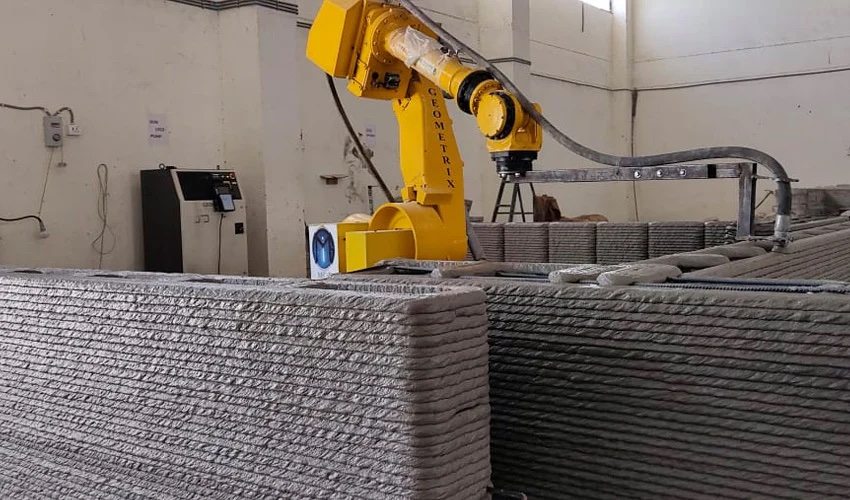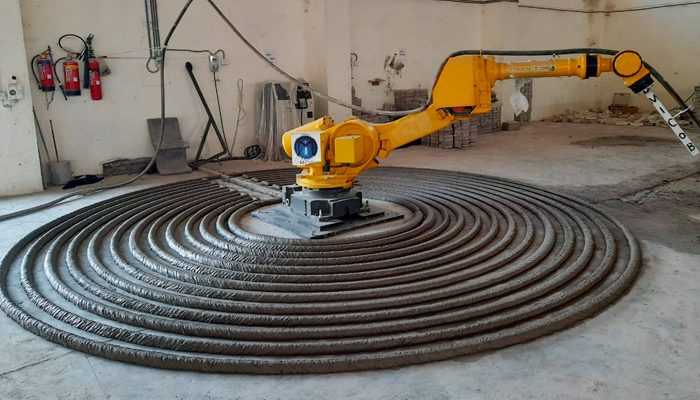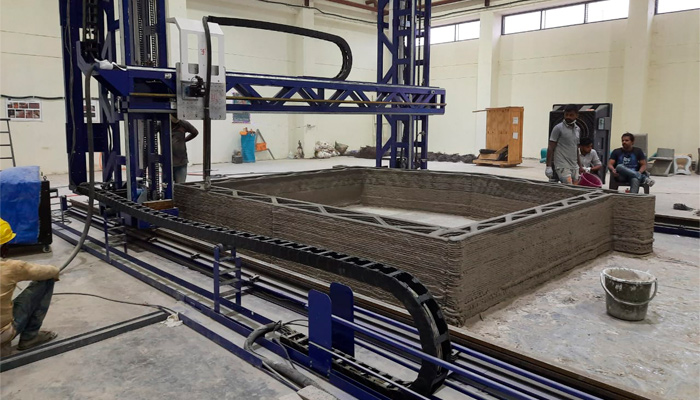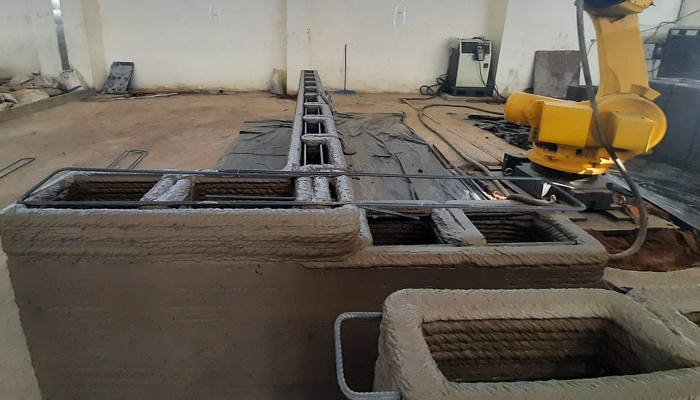MiCob and Its Concrete 3D Printing Technology for Civilian and Military Use

Continuing advances in additive concrete manufacturing are leading to the adoption of this technology in multiple industries. Companies around the world are seeking to take advantage of the benefits offered by this innovative method of production. One such company is MiCoB. The India-based company has developed its own 3D printing technology, with concrete, to promote its democratization in the country. But what is more interesting are the areas in which their 3D printers can be implemented. We spoke with the company’s co-founder, Shashank Shekhar, to learn more about the technology and its use in different sectors, such as civil, military, and decoration.
3DN: Can you introduce yourself and tell us about your relationship with 3D technologies?

Shashank Shekhar
I am Shashank Shekhar, Co–founder, and CEO of MICOB PVT LTD. I pursued my Ph.D. from IIT Gandhinagar in 3D concrete printing. During my Ph.D., I saw the huge potential that the technology has to offer in commercial construction. In 2018, along with my two other colleagues, I founded MiCoB. We dedicated the initial two years to addressing the different aspects of 3D concrete printing technologies, namely prototype development, development of in–house 3D printers, design of optimum concrete mix for printing, and incorporation of novel techniques for improvement of output quality. The successful results encouraged us to implement this technology in catering to the construction needs of both, the civil and defense markets. Since then, we have been fortunate to get the opportunity to demonstrate applications for 3D printing in full-scale commercial construction, and through different work orders that we received and successfully completed.
3DN: What is MiCoB and how did the idea of creating the company come about?
MiCoB is a 3D concrete printing based entrepreneurial venture, that’s motto is to merge art, automation, and construction. MiCoB strives to change the face of the construction industry and how it is perceived in general. The company focuses on bringing machine integration to the construction segment, using its state-of-the-art 3D concrete printing technology.
After my degree at IIT Roorkee, I observed the various challenges and associated risks posed in the construction industry. I also observed the wastage of time that occurs during the demolition of elements that lacks quality compliance due to man-made error and their subsequent development. All this made me think about the contribution that could be made in changing the face of construction, by incorporating novel techniques and methodologies. Consequently, I decided to pursue research in concrete 3D concrete printing, which was a newly emerging construction technology at that time. With the vision to make developments in the field that could eventually be commercialized, I kept on working thoroughly in the field and also kept seeking to form a strong team for the start-up. I was fortunate to meet Ankita and Rishabh, who shared my passion, and together we formed the basis of MiCoB. Since then we are constantly working towards excelling the technology and using it in the best possible ways to cater construction needs of our customers.

3DN: How does your concrete 3D printing technology work? What are the characteristics of your machine?
The 3D concrete printer comprises four parts: a motion assembly, a feeding system, a pump, and a continuous mixer. A fine paste of customized concrete mix is developed in the continuous mixer and is pumped to the feeding system. At the end of the feeding system, a nozzle is provided that dispenses the concrete mix in the form of thin layers. Motion assembly allows the motion of the feeding system so as to get the desired shape. A CAD model of the desired printed structure is developed and then fed to the software integrated with the motion assembly of the printer. The software sections the CAD model in layers considering the most optimum path of the motion assembly for the printing. These various parts of the assembly communicate with each other through a control architecture that forms the basis of the integration of various parts of the system and serves as the brain of the assembly.
We have so far developed two gantry based and two robotic system-based 3D printers. These developments cost 3 times lesser than European and American 3D Concrete printing systems. On the printing ink front, we have created a wide spectrum of printable material, e.g., light-weight mix, high-performance mix, and fiber-reinforced mix. We have also developed our in-house proprietary software solution. Our Advanced 3D Concrete Printing software has capabilities of 3D slicing, multiple file slicing, 3D simulation, G- Code generation, estimation, and analysis. Besides, we now have developed an excellent In-house team to help the clients in the design & engineering of 3D printed structures.

3DN: What projects have you developed with this manufacturing method?
The company has successfully demonstrated the applications of 3D concrete printing in the modular and rapid construction of structures for military and civil applications. We are an official supplier of the Indian army and are catering to their needs for permanent defense structures as well as residential spaces in extreme terrains and climates. Another exciting market segment that MiCoB caters to is that of concrete furniture. With its exceptional features, unique designs and high ease of customization, MiCoB’s concrete furniture is an excellent choice for the modern décor. In the coming time, we also aim to address the need for customized, flexible, and rapid construction of infrastructural elements, such as bridges and flyovers.
3DN: How do you see the future of additive manufacturing in the construction sector?
3D printing in construction has gained a lot of attention in the past few years, and its potential is being recognized across the globe. Due to the ease of customization, high construction pace, and high-quality production, the technology when integrated with the conventional methods, has the potential to revolutionize the construction industry. We are very positive about the avenues that the technology is going to create in the construction industry in the next few years. More information can be found on the MiCoB website.

What do you think of MiCoB’s activity? Let us know in a comment below or on our LinkedIn, Facebook, and Twitter pages! Don’t forget to sign up for our free weekly Newsletter here, the latest 3D printing news straight to your inbox! You can also find all our videos on our YouTube channel.
*All Photo Credits: MiCoB








This is interesting work. Can you expand a bit on how your printers cost 3X less than equivalent American printers? That is quite a savings, I imagine the market for these printers would be quite strong? Will they be available commercially?